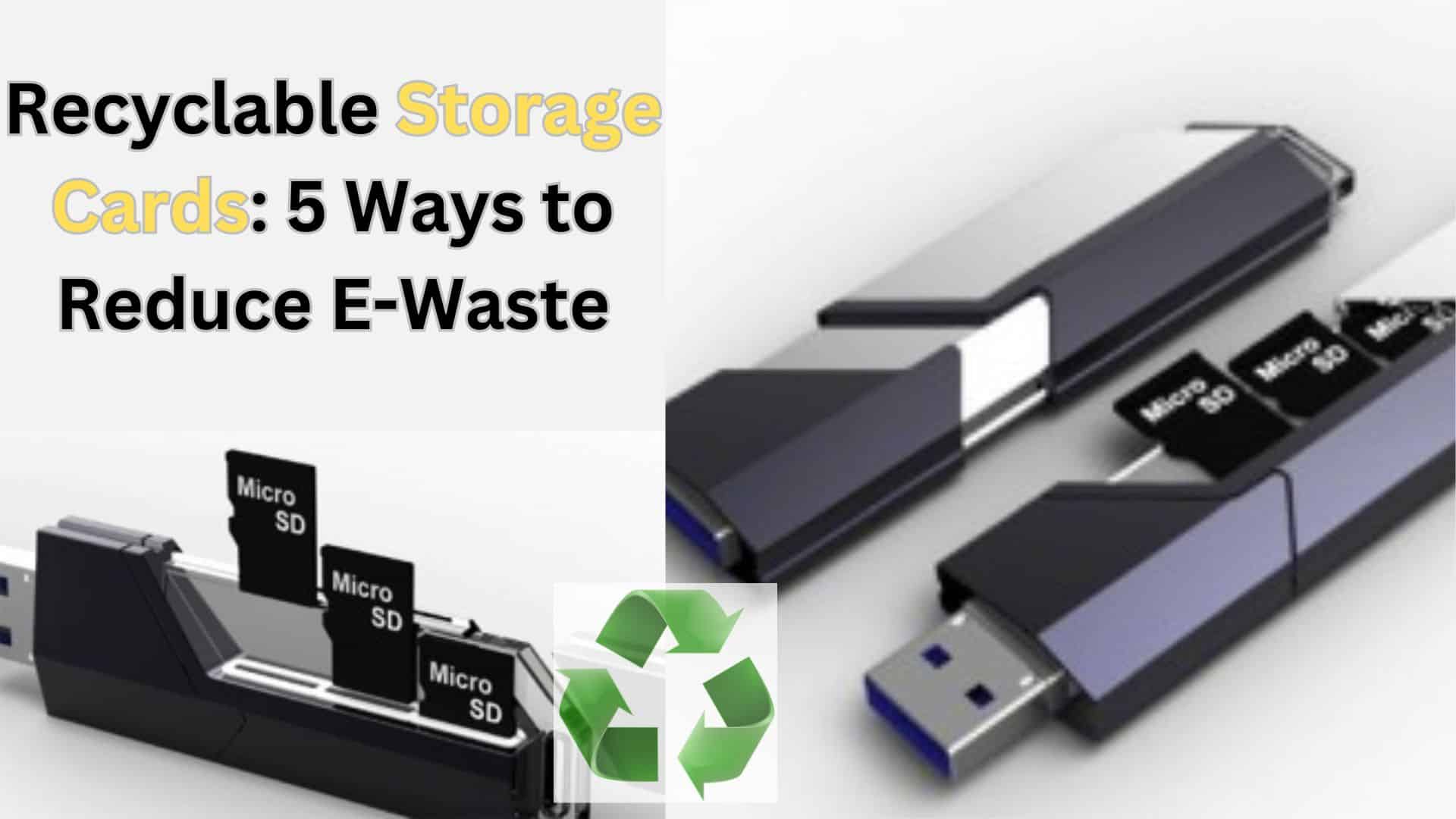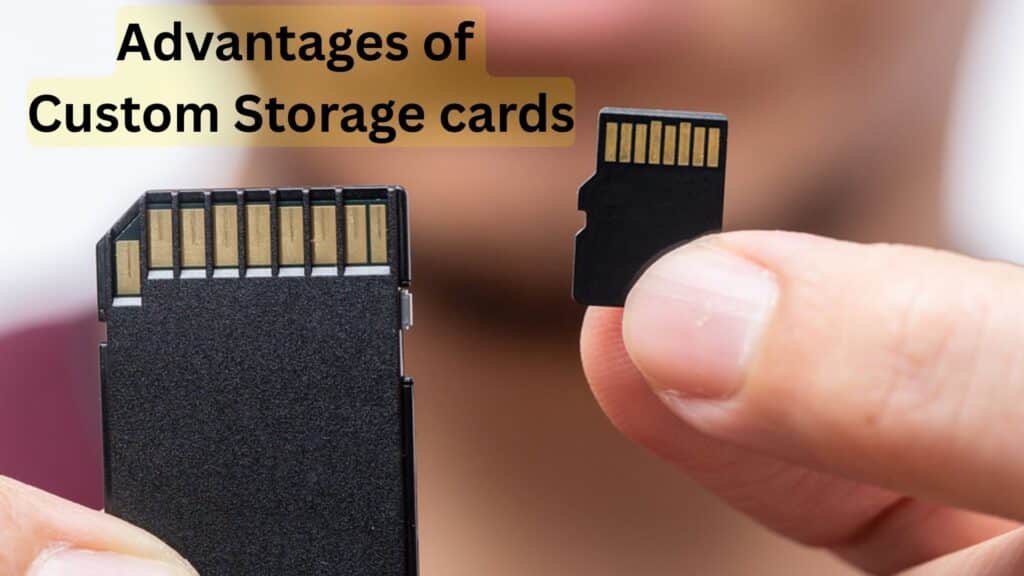Recyclable Storage Cards: 5 Ways to Reduce E-Waste

Introduction
The growing global concern surrounding electronic waste (e-waste) is an urgent environmental issue. With the rapid advancement of technology, millions of tons of electronic devices, including Storage Cards, memory cards, are discarded each year, contributing significantly to e-waste. This waste poses serious environmental risks, such as land contamination and air pollution. Storage devices, particularly memory cards, are often overlooked as contributors to this problem. However, by adopting recyclable memory cards Storage Cards and other sustainable storage solutions, we can significantly reduce the environmental impact of e-waste. This article explores the importance of choosing recyclable storage products and how both manufacturers and consumers can help address the e-waste challenge.
1. The E-Waste Problem
Statistics on Global E-Waste and Its Harmful Effects
Electronic waste has become one of the fastest-growing waste streams globally. According to the Global E-Waste Monitor, in 2021 alone, the world generated around 53.6 million metric tons of e-waste. A significant portion of this waste includes storage devices like memory cards, USB drives, and hard drives. If not properly disposed of or recycled, these products can leach harmful chemicals into the environment, causing soil and water contamination.
The disposal of e-waste is a major challenge because many electronic products, including storage cards, contain toxic substances such as lead, mercury, and cadmium. These materials can have detrimental effects on human health and the environment when they are not recycled correctly. Therefore, reducing e-waste is critical for protecting both ecosystems and public health.
The Lifespan of Electronic Devices and How Storage Products Contribute to E-Waste
Electronic devices, including smartphones, cameras, and computers, often have a limited lifespan, with many consumers replacing their devices every few years. Storage products, particularly memory cards, tend to be discarded along with outdated technology, contributing to e-waste accumulation. While these products can last for several years with proper care, their relatively low cost often leads to their premature disposal when new devices are purchased.
Choosing recyclable memory cards can help extend the lifespan of these products and reduce the need for constant disposal, minimizing their contribution to e-waste.
2. The Importance of Recyclable Storage Cards
Features of Recyclable Memory Cards and Their Benefits
Recyclable memory cards are designed with both performance and sustainability in mind. These storage products are made from materials that can be easily recycled at the end of their life cycle, reducing their environmental footprint. Unlike traditional memory cards, which may contain non-recyclable components, recyclable Storage Cards use materials like biodegradable plastics and eco-friendly metals that can be processed and reused.
The benefits of using recyclable memory cards are twofold: they help reduce the environmental impact of e-waste and also promote the responsible use of resources. Consumers who choose these products are supporting a circular economy, where materials are reused, and waste is minimized. This shift towards sustainability can also help manufacturers meet increasing consumer demand for eco-conscious products.
The Environmental Impact of Choosing Recyclable Over Disposable Alternatives
By opting for recyclable Storage Cards memory cards, consumers can make a significant contribution to reducing e-waste. These products can be recycled and repurposed, helping to decrease the need for new raw materials and lowering overall environmental impact. In contrast, disposable memory cards, which are not designed for recycling, often end up in landfills where they can take hundreds of years to decompose, leaching harmful chemicals into the surrounding environment.
Choosing sustainable storage solutions like recyclable memory cards reduces the burden on waste management systems and minimizes the need for landfills, making it a much more eco-friendly alternative.
3. How Manufacturers Are Addressing E-Waste
Examples of Companies Producing Recyclable Storage Cards
Many technology companies are recognizing the importance of sustainability and are taking steps to address e-waste through the production of recyclable Storage Cards memory cards. For instance, SanDisk and Kingston have both introduced memory cards made from eco-friendly materials that are easier to recycle. These companies are pioneering the shift toward greener storage products and helping to reduce the environmental impact of their products.
These manufacturers also prioritize product design to ensure that their storage devices are compatible with recycling systems, making it easier for consumers to properly dispose of or return their memory cards at the end of their life cycle.
Partnerships with Recycling Organizations and Certifications for Eco-Friendly Products
Several manufacturers are also partnering with recycling organizations and pursuing eco-certifications to further reduce e-waste. For example, companies like Samsung and Transcend have collaborated with recycling firms to ensure their products are properly disposed of and processed. Certifications such as the RoHS (Restriction of Hazardous Substances) and WEEE (Waste Electrical and Electronic Equipment) ensure that the memory cards are manufactured with the environment in mind and can be recycled responsibly.
These collaborations help foster a more sustainable storage market and encourage other manufacturers to follow suit in adopting sustainable storage solutions.
4. How Consumers Can Help
Tips for Consumers on How to Properly Dispose of or Recycle Storage Devices
Consumers play a vital role in reducing e-waste by making responsible decisions about how they dispose of their old storage devices. Here are a few tips for ensuring proper disposal:
- Recycle your memory cards: Many electronics stores and recycling centers offer recycling programs for storage devices Storage Cards.
- Use manufacturer take-back programs: Many manufacturers now offer take-back programs where you can return your old memory cards for proper recycling.
- Check for eco-friendly labels: Choose products that are certified for environmental safety, such as those with RoHS or WEEE certification.
Encouraging Consumers to Choose Products with Sustainable Disposal Options
Choosing products with built-in sustainability features, such as recyclable memory cards, encourages the storage industry to prioritize eco-friendly solutions. Consumers should look for products that are designed with recycling in mind and consider how they can reduce their overall environmental impact by selecting greener alternatives.
Conclusion
The increasing issue of e-waste highlights the urgent need for sustainable practices within the technology and storage industries. By choosing recyclable Storage Cards memory cards and other sustainable storage solutions, consumers and manufacturers alike can help reduce the environmental impact of e-waste. As we continue to face the growing challenge of electronic waste, it is essential for both businesses and consumers to prioritize recycling and responsible disposal. The future of the planet depends on our collective efforts to choose eco-friendly products and practices.



